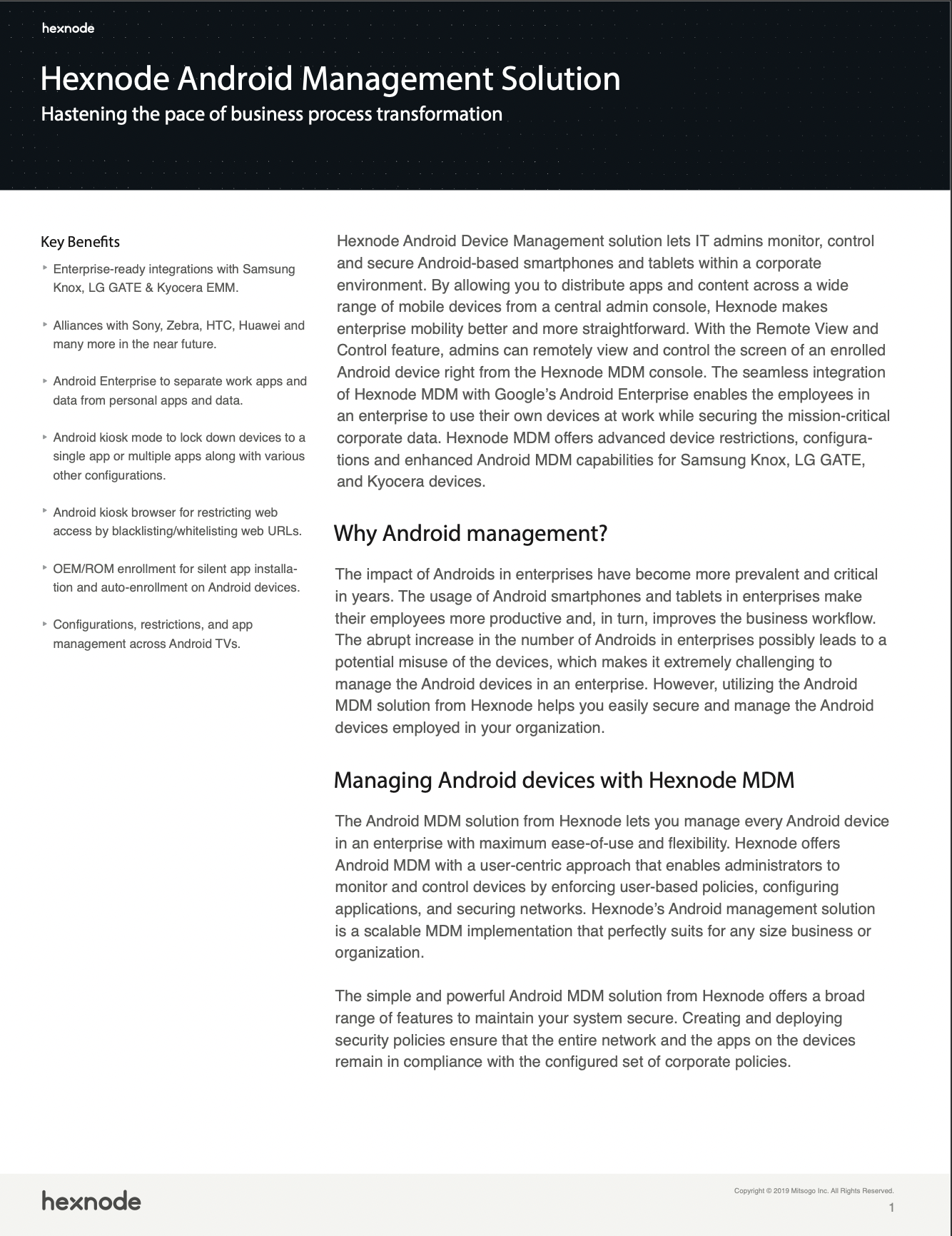We see them all around us. Kiosks lining up the hallways of transit hubs, self check-ins at clinics that saves one hours standing in line and filling out dreaded paperwork and let’s not forget the glitzy Times Square – the hub of all digital signages. These dedicated devices can be a time saver and let businesses get the right content displayed to the right users. Android lock task mode helps give an immersive kiosk experience combined with security, some of which include enforcing strong exit passwords and strictly limiting the device’s other functionalities.
Now that we’ve got a rough overview of what Android lock task mode is let’s have a brief rundown over some of its applications across various industries.
Healthcare:
- Patient self check-in.
- Integrate patient management or clinic management software within the self-service kiosk.
- Way finders.
- Ensure authorized entry by verifying all visitors.
Retail:
- Empower customers by letting them order from a screen.
- Improve customer engagement.
- Offer real time communication.
- Use POS devices for sales monitoring and billing.
Banking:
- Automate a number of banking services.
- Improve customer satisfaction by remotely connecting with an agent for consultation.
- Increase sales.
Education:
- Self-registration.
- Can be used as a message board.
- Improve learning experience.
- Track student progress.
Logistics:
- Inventory management.
- Track and trace movement of goods.
- Ensure smooth supply chain management.
If you are familiar with Android’s screen app pinning feature you probably might be wondering whether its worth incurring additional costs looking for an alternative such as Android lock task mode when you already have a handy feature readily available. It’s a weighted question.
Screen app pinning, also known as Android Guided Access does offer users the choice to enter a password or a PIN to quit the app that is pinned on the screen but with some of the disadvantages it offers, it wouldn’t be a bad idea to consider looking at some alternatives as well.
Screen App Pinning vs Android Lock Task Mode
Screen App Pinning
- It locks a single application to the screen and restricts users from accessing any other applications or features.
- Notifications and access to the home screen will be disabled.
- Can be enabled on any devices running on Android Lollipop and above.
Disadvantages of using screen app pinning:
- The screen pinning mode can be easily bypassed as a message will be displayed with steps detailing how the screen pinning mode can be exited. If it is not protected by a password or a PIN, this can leave sensitive data open to malicious users.
- Can be very time consuming, the app has to be manually pinned on all the managed devices.
Android Lock Task Mode
The device will be locked down to a single restricted usage. Although, both kiosk and lock task mode are used interchangeably, the latter enforces more restrictions on the device rendering the user strictly within the confines of a single application or a set of applications whitelisted by the admin.

Featured Resource
Hexnode Android Management
Managing Android devices shouldn't be as hard as it sounds. Download this datasheet to know how UEM helps with efficient Android Management within the enterprise.
Download DatasheetLock task mode can be enabled via a Unified Endpoint Management solution and the device needs to be enrolled in Android Enterprise as a device owner. It works on any device running Android 6.0 and above. Features that can be disabled include system info, home button, notifications, recent apps button and global actions. They are however customizable in Android 9.0 and above.
The Differences: a brief overview
| Screen Pinning | Lock Task Mode |
| Any app can be pinned. | Only app whitelisted by the DPC can be pinned. |
| Can be done on any device. | Can be done only on fully managed Android Enterprise devices. |
| Works well for limited personal usage. | Can be used as kiosks and digital signages. |
| Requires the app to be manually pinned on the device. | The app can be remotely pushed onto the device. |
| Can be easily bypassed. | Requires user to enter a security PIN or password. |
Are UEM’s necessary?
A UEM does more than just simplify the process of managing single purpose dedicated devices. It can help organizations:
- Improve worker productivity.
- Enhance device security.
- Analyze app usage.
- Provide a secure browsing experience with the help of a dedicated kiosk browser.
- Improve communication via kiosk messenger.
- Tailor devices to end user requirements through multiple customization options.
We always forage the internet to seek answers to the questions we have in mind and your customers are just the same.Providing a secure browsing experience in dedicated devices is becoming more important now than ever as it not only helps to improve customer satisfaction but also guards sensitive information related to your organization from the clutches of cybercriminals.
Manage dedicated devices with Hexnode
Try out Hexnode’s kiosk management capabilities to secure dedicated devices and be in compliance with various industry regulations.
Sign upThe internet harbours a wealth of PII information. Enforcing Android lock task mode via a UEM solution as opposed to sticking on to just screen app pinning can aid organizations meet various regulatory compliances by neatly securing the endpoints and the data residing within it.

Share your thoughts